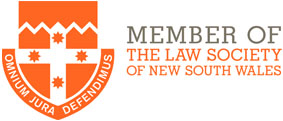From 01 November 2021, all directors of Australian companies must obtain a Director Identification Number (DIN). This includes foreign directors of Australian companies or other Australian registered bodies who do not reside in Australia.
Directors must register for their DIN personally. You cannot ask any other person to register on your behalf, including your accountant or tax agent. It is free to apply.
The Australian Business Registry Services (ABRS) will maintain the DIN register.
A DIN is a 15 digit code unique to you. It will start with 036 (which is the 3-digit country code for Australia under International Standard ISO 3166) and have a further 11 digits plus one further ‘check’ digit for error detection.
Once you have a DIN, you have it for life, even if you are no longer a director, change your name or move.
ASIC will soon require directors to identify themselves by their DIN when registering a company or being added as a director.
DINs cannot be yet searched by the public, but they may become searchable in the future.
Why have DINs?
The key objectives of the DIN regime are to promote good corporate conduct by:
- enabling tracking of directors and their relationships across companies
- ensuring the corporate history of directors is easily accessible to regulators and external administrators
- verifying the identity of directors to help reduce fraud, and
- limiting opportunities for illegal activities like “phoenixing”
When do you need to get a DIN?
The timing of the need to register yourself for a DIN depends on when you became or intend to become a director:
| Date you became a director (under Corporations Act) | Deadline for obtaining a DIN |
| Before 01 November 2021 | By 30 November 2022 |
| Between 01 November 2021 and 04 April 2022 | Within 28 days of appointment |
| On or after 5 April 2022 | Prior to your appointment |
ASIC is responsible for enforcing DIN offences set out in the Corporations Act 2001 (Cth). It is a criminal offence if you do not apply on time, to apply for multiple DINs or misrepresent a DIN.
Who doesn’t need a DIN?
Registration for a DIN is not needed for:
- a company secretary that is not also a director
- a person acting as an external administrator of a company
- a person running their business as a sole trader or partnership (as they don’t have a company structure)
- an officer of an unincorporated association, cooperative or incorporated association established under State or Territory legislation, unless the organisation also has an Australian Registered Business Number or ARBN.
How do you get a DIN?
To register for a DIN, you will need to gather the necessary details to verify yourself (Tax File Number, passport, drivers license, Medicare card, PAYG payment summary, bank details, superannuation statement etc), register a “myGovID” account (note that this is different to a “myGov” account), and then apply for the DIN on the ABRS website.
Once you get a DIN, you should provide it to the company or companies of which you are currently a director and those you intend to become a director of (to the company secretary, another director or authorised agent of the company)
FURTHER INFORMATION
Craig Pryor is principal solicitor at McKillop Legal. For further information in relation to Corporations Act, directors duties or corporate governance issues or any business or commercial law matter, contact us on (02) 9521 2455 or email help@mckilloplegal.com.au
This information is general only and is not a substitute for proper legal advice. Please contact McKillop Legal to discuss your needs.












